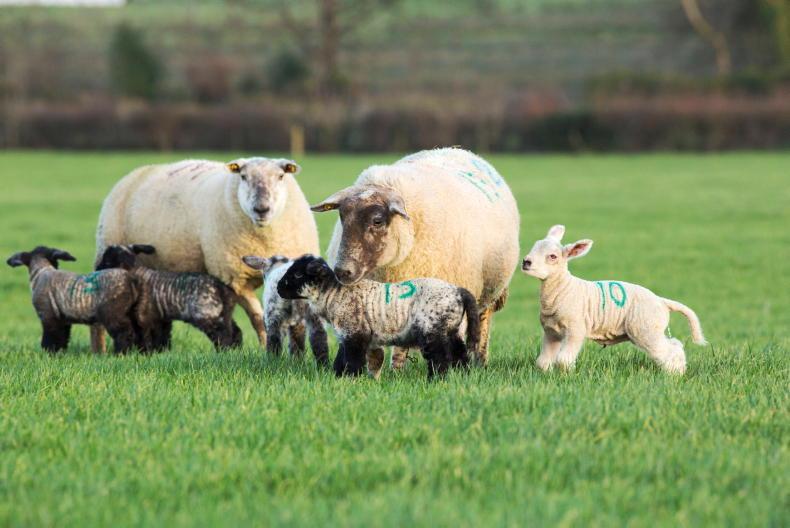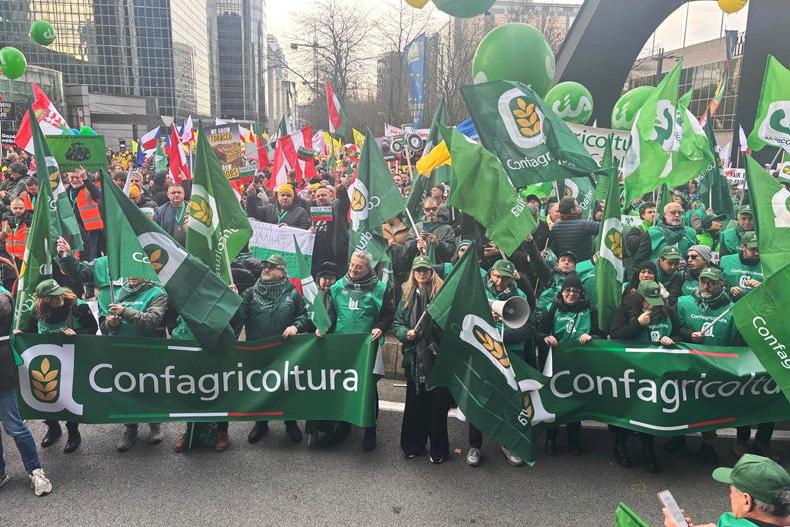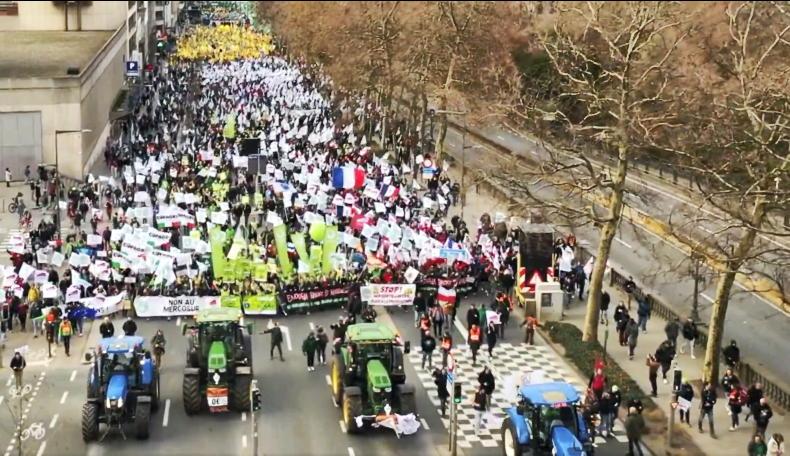Sheep farmers are similar to every other enterprise in that there will be some farmers who will see the value of their payments reduce over the next five years and others who stand to benefit from increased payments. The sheep sector will on average, however, experience less severe cuts under the latest CAP reform.
This is due to a legacy issue of sheep farms generating lower entitlement values during the reference years (2000 to 2002). It is hard to believe that the level of payment a farmer receives now is still linked to farming activity more than 20 years ago.
The following three case studies are used to demonstrate three common scenarios facing sheep farmers and provide a blueprint for how you can assess how the CAP Strategic Plan 2023-2027 will affect your business
Case study 1: lowland sheep farmer with 250 ewes
The first case study explored takes a lowland sheep farmer with 250 ewes farming 39ha of forage area, along with 1.1ha of land previously categorised as scrub, and 39 entitlements with a value of €265 including Greening.
This size of sheep flock is above the national average but it is close enough to the average stocking rate of seven ewes/ha. Table 1 uses the Department of Agriculture’s CAP calculator to assess how the current entitlement value of €265 will change. It does not include the 1.2ha of scrub which is now eligible for an eco-scheme payment, but we will touch on that later.
This farm will contribute approximately €2,584 to fund the eco scheme ((39ha x €265) x 25%). The Department’s CAP calculator uses an eco-scheme value of €77/ha. This is based on a participation rate of 85% of the eligible land area and delivers a payment of €3,003. In such a scenario this farmer benefits from the eco scheme.
It is, however, likely that there will be a higher participation rate which could reduce the payment per hectare to about €65/ha. This would reduce the eco-scheme payment to €2,535, meaning there is no real gain on such a farm. The 1.2ha of scrub is eligible for payment and will generate a payment of €78 more.
The farm contributes €1,033.50 to CRISS / frontloading. This works out at €26.50 on the value of each entitlement. Therefore, the farm will benefit from CRISS by over €200 (€43.15 x 30ha maximum payment) per annum over the next five years.
As mentioned previously, the entitlement value of €265 is just above the national average entitlement value including Greening. As such, convergence has no real impact on the farming business.

The net effect of the CAP reform, based on the current model of the CAP calculator, is a net increase of €524.61 over the next five years. This may change depending on the level of payment under the eco scheme.
Area-based schemes
The main area-based scheme relating to this farm is the Areas of Natural Constraint which will see no change in payment, and will be in the region of €2,685. The Sheep Improvement Scheme (SIS) replaces the Sheep Welfare Scheme and with a payment of €12/ewe it is worth €3,000. However, the €2/ewe higher payment is likely to be eroded by the requirement to complete two actions along with purchasing two genotyped rams.
It is likely that such a farm could achieve the average payment under the Agri-Climate Rural Environment Scheme (ACRES) but there is not likely to be any significant change to the net payment compared to if the farm participated in the Green Low-Carbon Agri-Environment Scheme.
Case study 2: mixed farm where sheep is the smaller enterprise
The farm in case study 2 is an example of a mixed farm where sheep was the smaller enterprise. The combined enterprises generated a higher entitlement value during the reference year from suckler-to-beef production and purchasing in additional cattle for finishing.
The farm in question currently has 30 suckler cows bringing all followers through to beef which are run alongside 80 ewes. It is the same farm size of 39ha with no scrub in this situation and 39 entitlements with a current entitlement value of €370.
If we start again with the eco scheme, the farm contributes €3,607.50 ((39 x €370) x 25%) to the overall fund. In the scenario of an 85% participation rate, the farm will receive in the region of €3,000 from the eco scheme. This could reduce to €2,535 in the case of a higher participation rate and lower payment per hectare.
Farms with higher value entitlements and areas significantly above the maximum payment level of 30ha under CRISS will in many cases be net contributors to CRISS. In this case study, the farm contributes €1,443 and recoups €1,294.50.
Convergence at a rate of 85% in this CAP has a negative effect on the remaining entitlement value (€370 minus 25% for the eco scheme, 10% for CRISS and 3% for the Complementary Income Support for Young Farmers) as detailed in Table 2.
The combined effect of a reduction in the entitlement value through convergence along with net contributions under the eco and CRISS schemes results in the overall payment falling by €1,836 in 2023, rising to €2,793 in 2026 and 2027. The net effect of these cuts over the five years of the CAP Strategic Plan is a reduction in the level of payment of at least €12,000, with this loss increasing in the case of a lower eco-scheme payment.
There is little under CAP to compensate for such losses. The farm will gain a higher payment of in the region of €3,900 under the Suckler Carbon Efficiency Programme. The big question here is if the Beef Environmental Efficiency Programme (BEEP) will continue long term and provide a net increase in payment over the Beef Data and Genomics Programme and BEEP.
Payment under ANC is unchanged and the likelihood is that payment under ACRES will not be significantly different to that which was received if the farm participated in Green, Low-Carbon, Agri-Environment Scheme (GLAS). The only remaining measure is if the farm considered organics which would increase the payment per years by in excess of €11,000 but the stocking rate would need to be altered.
Case study 3: hill sheep farm with 80ha of lands comprising 45ha commonage and 35ha enclosed owned lands
The farming enterprise in the third case study is a system that will benefit from this CAP reform. The farm in question is a hill sheep farm with 80ha of lands comprising 45ha commonage and 35ha enclosed owned lands. The farm has an entitlement for each hectare of land with a value of €170 and is currently running 200 ewes.
If we again look at the eco scheme, the farm is a major winner from this element of the new CAP. It contributes €3,400 ((€170 x 80ha) x 25%) but under the current CAP calculations receives a payment of €6,160.
It is not as big a winner as you might expect under CRISS and this is driven by the payment contributed to the fund underpinned by a large area of 80ha (€1,360 payment) and the area on which payment is received capped at 30ha.
As the value of the entitlements is significantly lower than the national average, the farm benefits from convergence with the BISS payment increasing from €8,744.80 to €10,620.
The payment per annum increases by €2,599 in year one, rising to €4,474 in years four and five. This give a net increase over the five years of over €18,600.
In a scenario of a lower eco-scheme payment of €65/ha, for example, this level of payment would be reduced by €960 per annum.
Scheme options
Such a farm is eligible for payment under the Sheep Improvement Scheme. This would be worth €2,400, with costs of about €500 to €600 per annum. The farm would be a prime candidate for ACRES under the co-operation entry route. Organic farming is being considered by more extensive systems since the reduction in the stocking rate requirement, but commonage is not eligible for payment and can create some challenges depending on how stock are handled.
Sheep farmers are similar to every other enterprise in that there will be some farmers who will see the value of their payments reduce over the next five years and others who stand to benefit from increased payments. The sheep sector will on average, however, experience less severe cuts under the latest CAP reform.
This is due to a legacy issue of sheep farms generating lower entitlement values during the reference years (2000 to 2002). It is hard to believe that the level of payment a farmer receives now is still linked to farming activity more than 20 years ago.
The following three case studies are used to demonstrate three common scenarios facing sheep farmers and provide a blueprint for how you can assess how the CAP Strategic Plan 2023-2027 will affect your business
Case study 1: lowland sheep farmer with 250 ewes
The first case study explored takes a lowland sheep farmer with 250 ewes farming 39ha of forage area, along with 1.1ha of land previously categorised as scrub, and 39 entitlements with a value of €265 including Greening.
This size of sheep flock is above the national average but it is close enough to the average stocking rate of seven ewes/ha. Table 1 uses the Department of Agriculture’s CAP calculator to assess how the current entitlement value of €265 will change. It does not include the 1.2ha of scrub which is now eligible for an eco-scheme payment, but we will touch on that later.
This farm will contribute approximately €2,584 to fund the eco scheme ((39ha x €265) x 25%). The Department’s CAP calculator uses an eco-scheme value of €77/ha. This is based on a participation rate of 85% of the eligible land area and delivers a payment of €3,003. In such a scenario this farmer benefits from the eco scheme.
It is, however, likely that there will be a higher participation rate which could reduce the payment per hectare to about €65/ha. This would reduce the eco-scheme payment to €2,535, meaning there is no real gain on such a farm. The 1.2ha of scrub is eligible for payment and will generate a payment of €78 more.
The farm contributes €1,033.50 to CRISS / frontloading. This works out at €26.50 on the value of each entitlement. Therefore, the farm will benefit from CRISS by over €200 (€43.15 x 30ha maximum payment) per annum over the next five years.
As mentioned previously, the entitlement value of €265 is just above the national average entitlement value including Greening. As such, convergence has no real impact on the farming business.

The net effect of the CAP reform, based on the current model of the CAP calculator, is a net increase of €524.61 over the next five years. This may change depending on the level of payment under the eco scheme.
Area-based schemes
The main area-based scheme relating to this farm is the Areas of Natural Constraint which will see no change in payment, and will be in the region of €2,685. The Sheep Improvement Scheme (SIS) replaces the Sheep Welfare Scheme and with a payment of €12/ewe it is worth €3,000. However, the €2/ewe higher payment is likely to be eroded by the requirement to complete two actions along with purchasing two genotyped rams.
It is likely that such a farm could achieve the average payment under the Agri-Climate Rural Environment Scheme (ACRES) but there is not likely to be any significant change to the net payment compared to if the farm participated in the Green Low-Carbon Agri-Environment Scheme.
Case study 2: mixed farm where sheep is the smaller enterprise
The farm in case study 2 is an example of a mixed farm where sheep was the smaller enterprise. The combined enterprises generated a higher entitlement value during the reference year from suckler-to-beef production and purchasing in additional cattle for finishing.
The farm in question currently has 30 suckler cows bringing all followers through to beef which are run alongside 80 ewes. It is the same farm size of 39ha with no scrub in this situation and 39 entitlements with a current entitlement value of €370.
If we start again with the eco scheme, the farm contributes €3,607.50 ((39 x €370) x 25%) to the overall fund. In the scenario of an 85% participation rate, the farm will receive in the region of €3,000 from the eco scheme. This could reduce to €2,535 in the case of a higher participation rate and lower payment per hectare.
Farms with higher value entitlements and areas significantly above the maximum payment level of 30ha under CRISS will in many cases be net contributors to CRISS. In this case study, the farm contributes €1,443 and recoups €1,294.50.
Convergence at a rate of 85% in this CAP has a negative effect on the remaining entitlement value (€370 minus 25% for the eco scheme, 10% for CRISS and 3% for the Complementary Income Support for Young Farmers) as detailed in Table 2.
The combined effect of a reduction in the entitlement value through convergence along with net contributions under the eco and CRISS schemes results in the overall payment falling by €1,836 in 2023, rising to €2,793 in 2026 and 2027. The net effect of these cuts over the five years of the CAP Strategic Plan is a reduction in the level of payment of at least €12,000, with this loss increasing in the case of a lower eco-scheme payment.
There is little under CAP to compensate for such losses. The farm will gain a higher payment of in the region of €3,900 under the Suckler Carbon Efficiency Programme. The big question here is if the Beef Environmental Efficiency Programme (BEEP) will continue long term and provide a net increase in payment over the Beef Data and Genomics Programme and BEEP.
Payment under ANC is unchanged and the likelihood is that payment under ACRES will not be significantly different to that which was received if the farm participated in Green, Low-Carbon, Agri-Environment Scheme (GLAS). The only remaining measure is if the farm considered organics which would increase the payment per years by in excess of €11,000 but the stocking rate would need to be altered.
Case study 3: hill sheep farm with 80ha of lands comprising 45ha commonage and 35ha enclosed owned lands
The farming enterprise in the third case study is a system that will benefit from this CAP reform. The farm in question is a hill sheep farm with 80ha of lands comprising 45ha commonage and 35ha enclosed owned lands. The farm has an entitlement for each hectare of land with a value of €170 and is currently running 200 ewes.
If we again look at the eco scheme, the farm is a major winner from this element of the new CAP. It contributes €3,400 ((€170 x 80ha) x 25%) but under the current CAP calculations receives a payment of €6,160.
It is not as big a winner as you might expect under CRISS and this is driven by the payment contributed to the fund underpinned by a large area of 80ha (€1,360 payment) and the area on which payment is received capped at 30ha.
As the value of the entitlements is significantly lower than the national average, the farm benefits from convergence with the BISS payment increasing from €8,744.80 to €10,620.
The payment per annum increases by €2,599 in year one, rising to €4,474 in years four and five. This give a net increase over the five years of over €18,600.
In a scenario of a lower eco-scheme payment of €65/ha, for example, this level of payment would be reduced by €960 per annum.
Scheme options
Such a farm is eligible for payment under the Sheep Improvement Scheme. This would be worth €2,400, with costs of about €500 to €600 per annum. The farm would be a prime candidate for ACRES under the co-operation entry route. Organic farming is being considered by more extensive systems since the reduction in the stocking rate requirement, but commonage is not eligible for payment and can create some challenges depending on how stock are handled.











SHARING OPTIONS